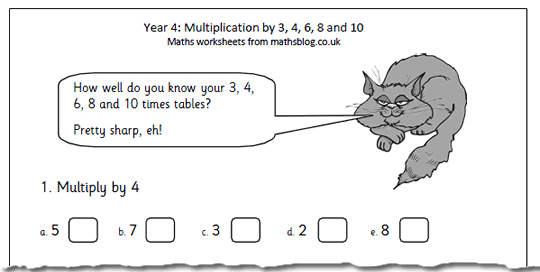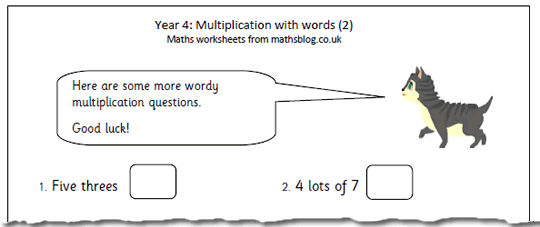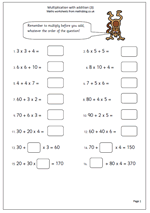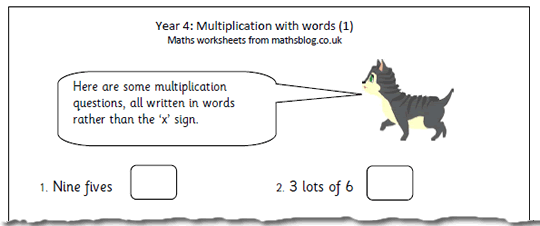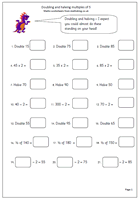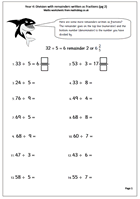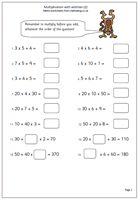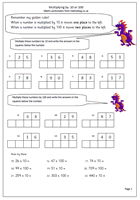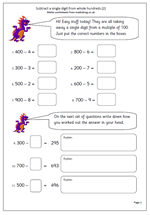How well are tables known? Here is a quick sheet to see how well the 3x, 4x, 6x, 8x and 10 times tables are known. Probably the two hardest of these are the 6 times and 8 times tables and whilst it is well worth knowing that the six times table is double the 3x table and that the 8x table is double the 4x table, there is nothing to beat actually knowing all tables off by heart, so that any answer can be given just as quickly as answering the question ‘What is your name?’
Children who know their tables well will find this page very easy. If they don’t know them it can take a surprisingly long time!
